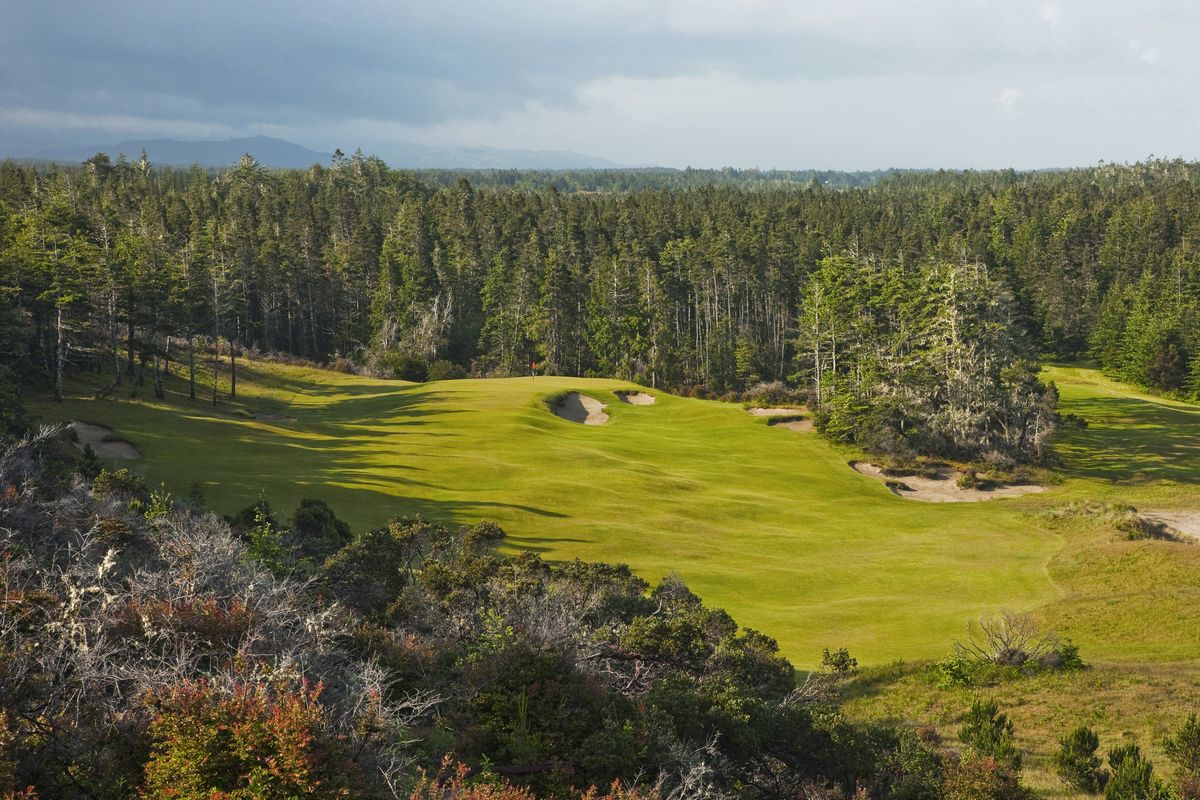Bandon Trails moves inland, but it’s every bit as challenging as ocean-lined courses at Bandon Dunes Resort

Stop me if you’ve read this before – none of Bandon’s four courses are alike, other than the shared sandy, hilly terrain and unmatched views.
Case in point: Bandon Trails. It’s more inland, has a woodsy feel and approach shots generally held more so than at the three other courses. It wasn’t as windy, but that changed as we hiked the vista to the tee box on No. 14. The elements were very much in play for the final five holes.
“You make the corner and start heading north,” director of golf Jeff Simonds noted, “and it’s like leaving one room and going outside.”
Brandon Trails, designed by Bill Coore and Ben Crenshaw, opened in 2005, the third offering at the resort.
“A lot of our guests that come out annually, the more times they visit it seems like they put more stock in Trails as their favorite course,” Simonds said.
Decision-making begins on your first swing. No. 1 is 356 yards and driver isn’t necessary to reach an ideal location in a bowled fairway. Accuracy is more important than an extra 20 yards off the tee. Keep it between the fairway bunkers left and right and you’ll probably have a wedge for a second shot between several sizable mounds covered in high grass.
The par-3 second hole brings more variables into the equation. Elevated tee box, red flag on a 166-yard shot and a five-yard wind to consider. We had one ball on the green and one ball lost in the cabbage left.
The par-3 fifth is just 114 yards but even at that short distance we didn’t pick up on its nuances. We could see the deep, recessed bunkers in front of the green but it looked like there was a backstop beyond the red pin. Appearances can be deceiving. There was actually a depression that guided Pat’s shot from the 20-foot range to a testy 45-footer from an upper tier. Somehow we managed three ‘3s’.
“You miss about 10 feet of the green, maybe more, and it dives down and away from you and it blends in so well,” Simonds said.
Another friendly reminder: hire a caddy.
“When you’re playing any of the courses they help you read the greens, they can explain or see some of the things you wouldn’t see playing a course you’ve never played before,” director of communications Erik Peterson said. “And a type of course you’ve never played before.”
The eighth is a drivable 299-yard par 4 but there is risk-reward with abundant sand traps and a right-to-left sloping fairway. Jack’s drive nearly reached the green and he made birdie. Pat’s ball caught a trap on the left and took a while to locate.
The back nine is a sequence of one interesting hole after another. The par-4 11th is 429 yards, but plays shorter as drives feed hard downhill and to the right. If you don’t keep your drive well left you could end up in a sizable trap or water that spans the right side of the fairway.
The longest par 3 we encountered is the straight-forward, 235-yard 12th. A nice drive on the downhill par-4 13th sets up the right angle to avoid a cavernous green-side bunker.
The par-4 14th offers a wonderful panoramic view and the possibility of driving a green about as wide as your driveway. Drives off line will require a deft touch on a second shot from a tough angle.
The par-5 16th is 494 yards but a head wind and the fact that the last 275 yards are straight uphill made it a three-shot hole.
“One of my favorite quotes Bill Coore said is, “Not all par-5s can be reachable in two. Downwind, 16 isn’t a difficult hole, but into the wind you’re not going to get home in two. Nowadays a par 5 is a birdie opportunity because you can two-putt for it,” Simonds said. “No. 16 is a great example of a par 5 where you’d better get that third shot in the right position because par is a good score.”
No. 18 features a partially blind tee shot to a fairly wide, heavily undulated fairway. The second shot is an elevated green with a false front.
“The complete green complex at Trails is just fantastic, a lot of subtle breaks,” Simonds said. “It uses some false fronts to keep from chasing (the ball) as much as Old Macdonald.
“The playability is so strong. The fact that it’s missing an ocean and it’s still that good … it has ocean views but you’re not so much playing along it.”